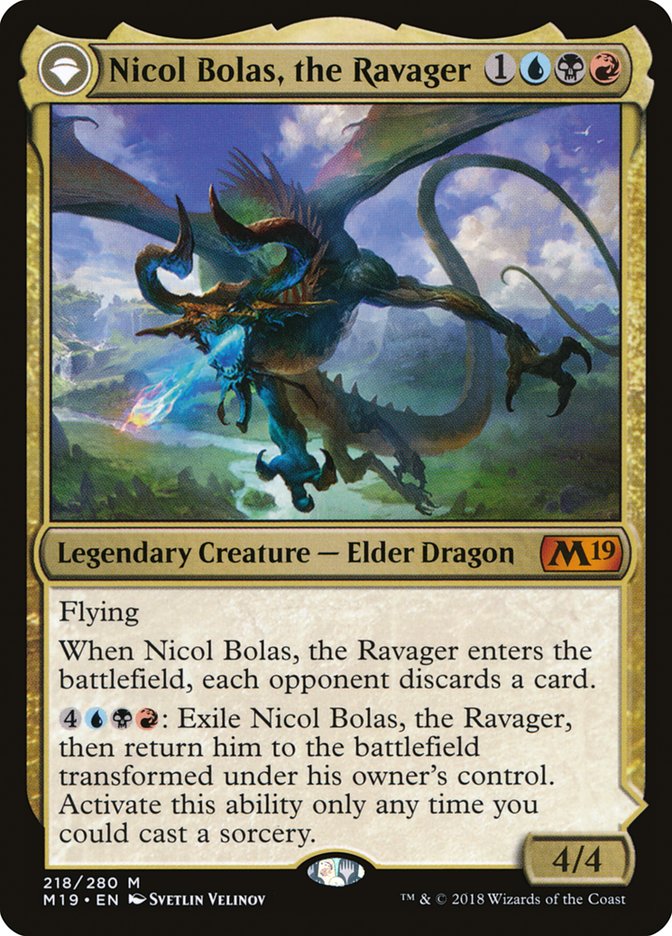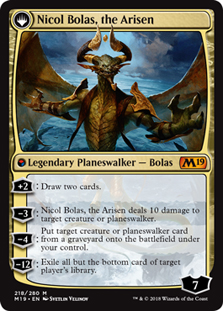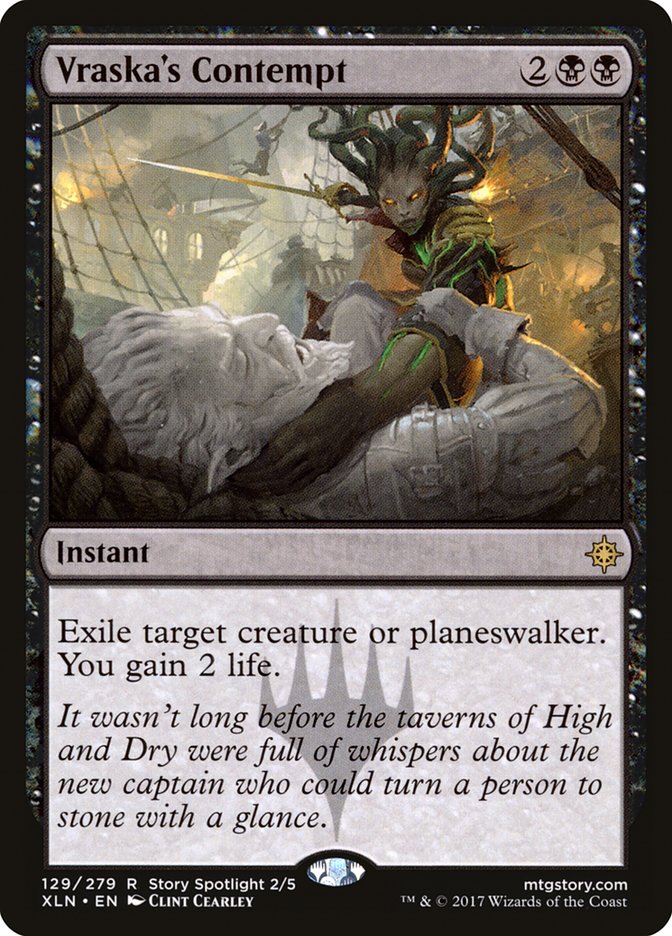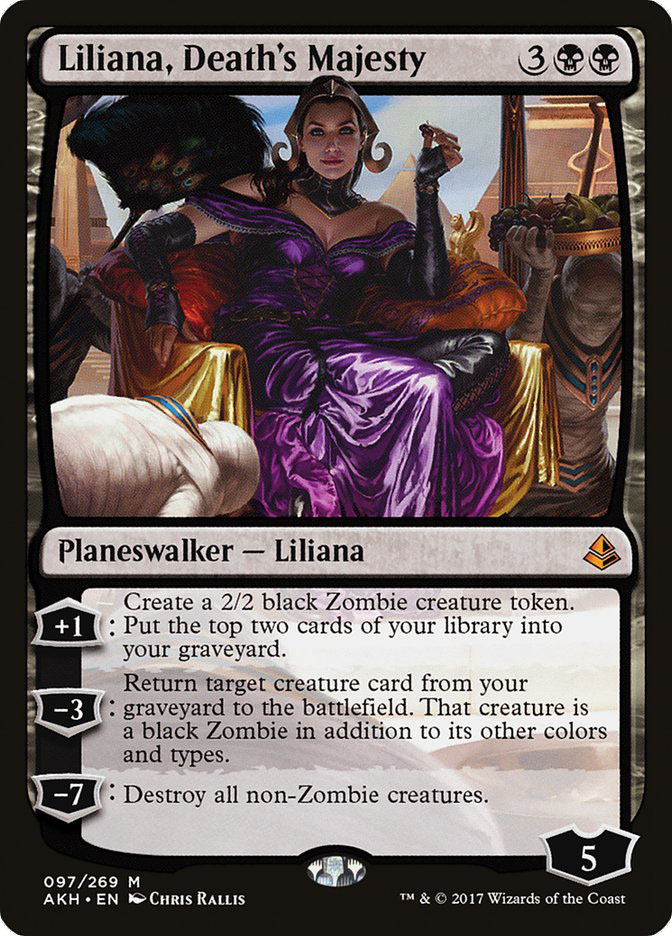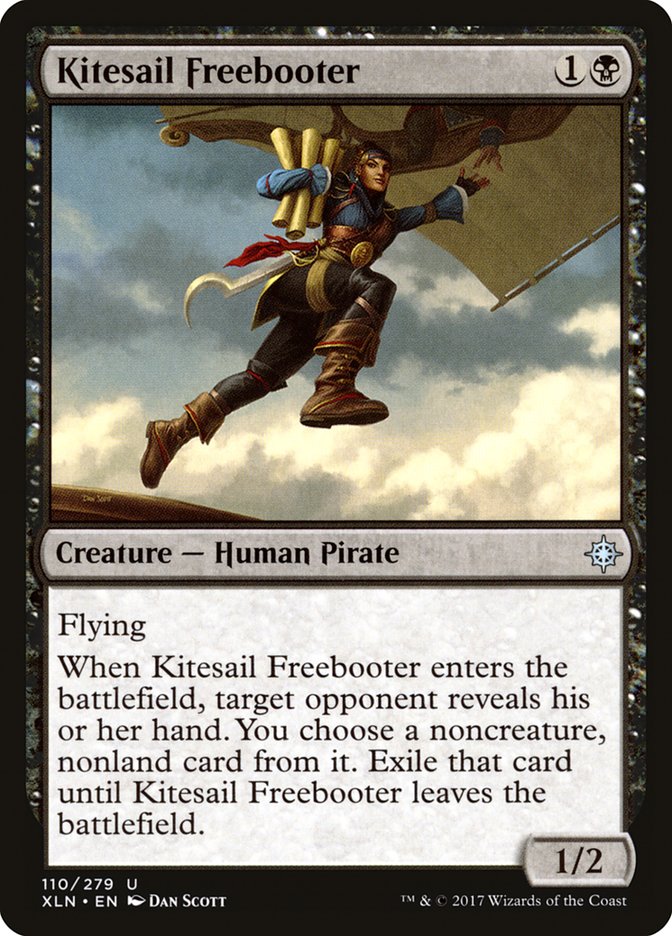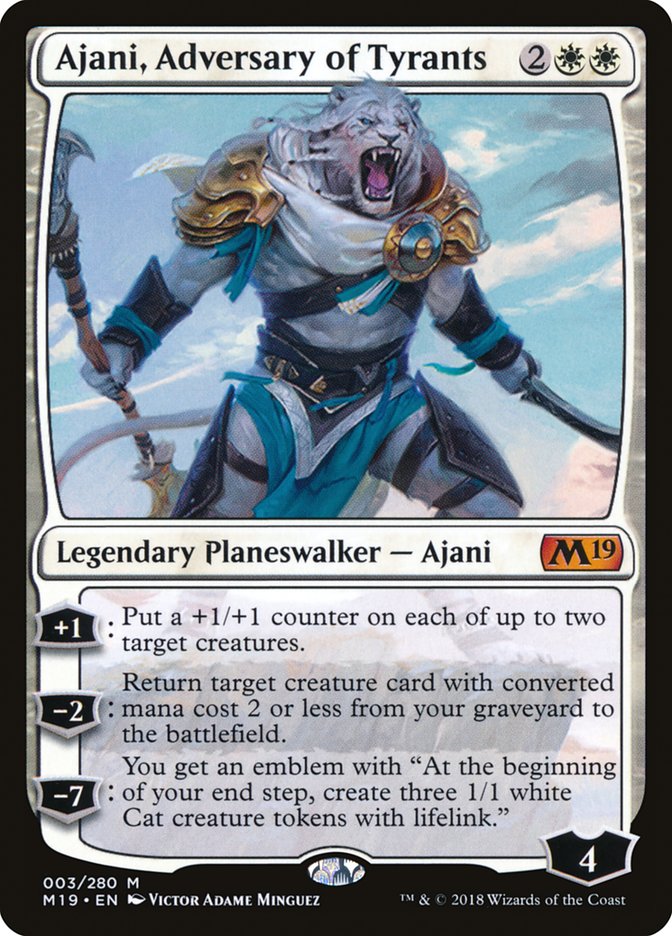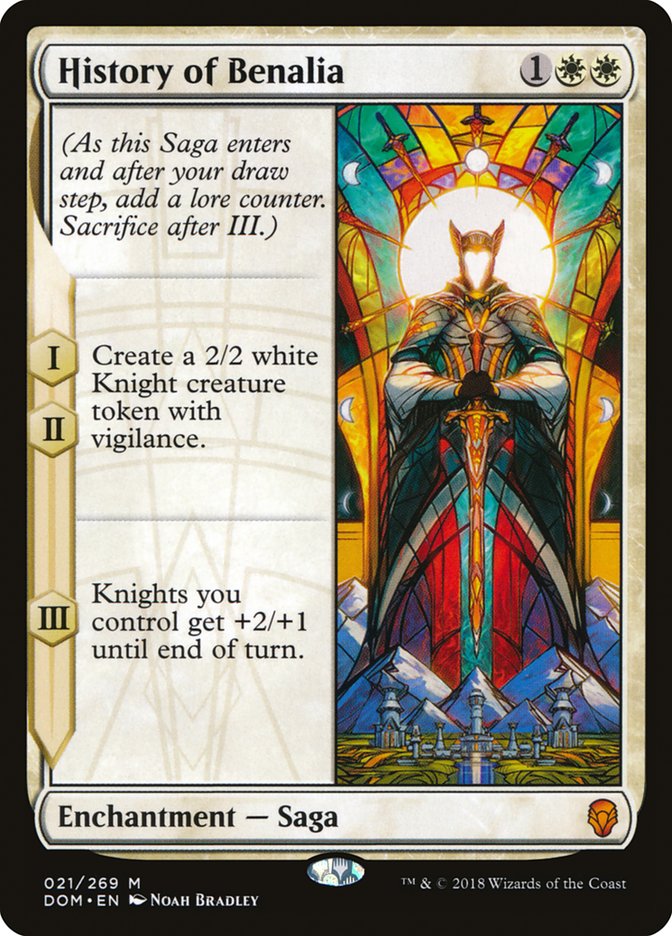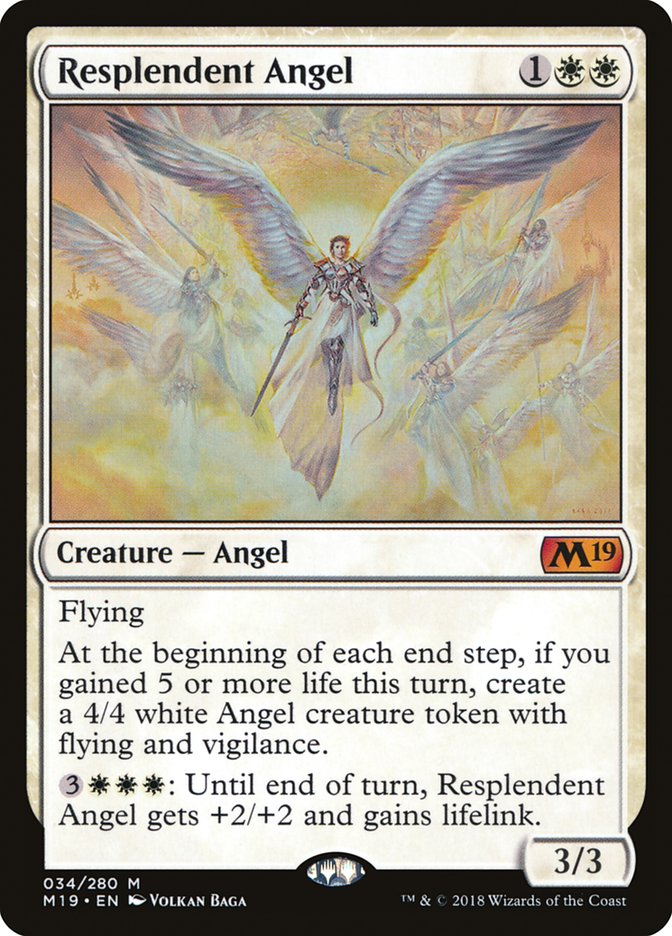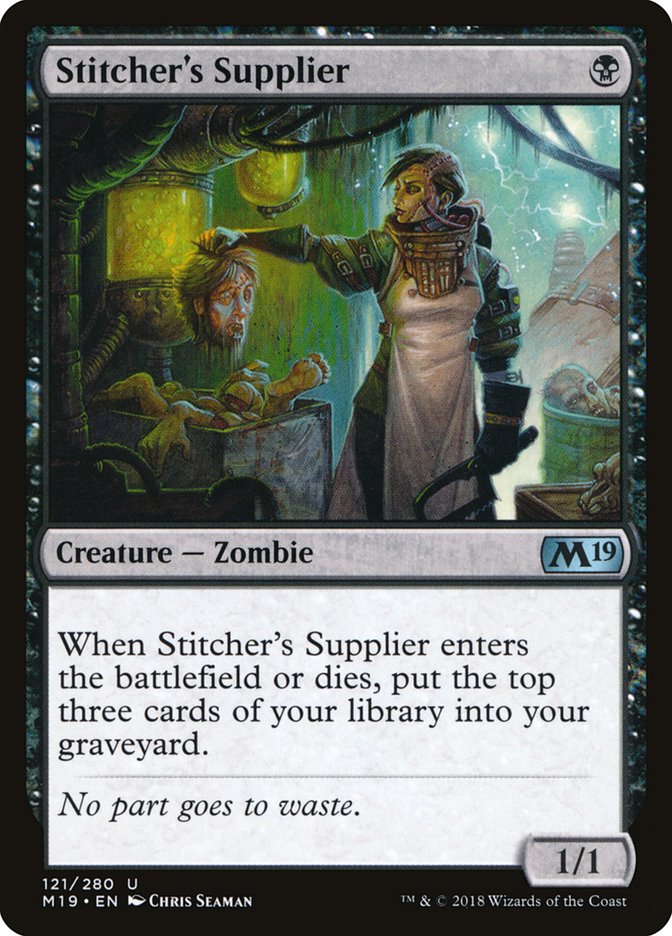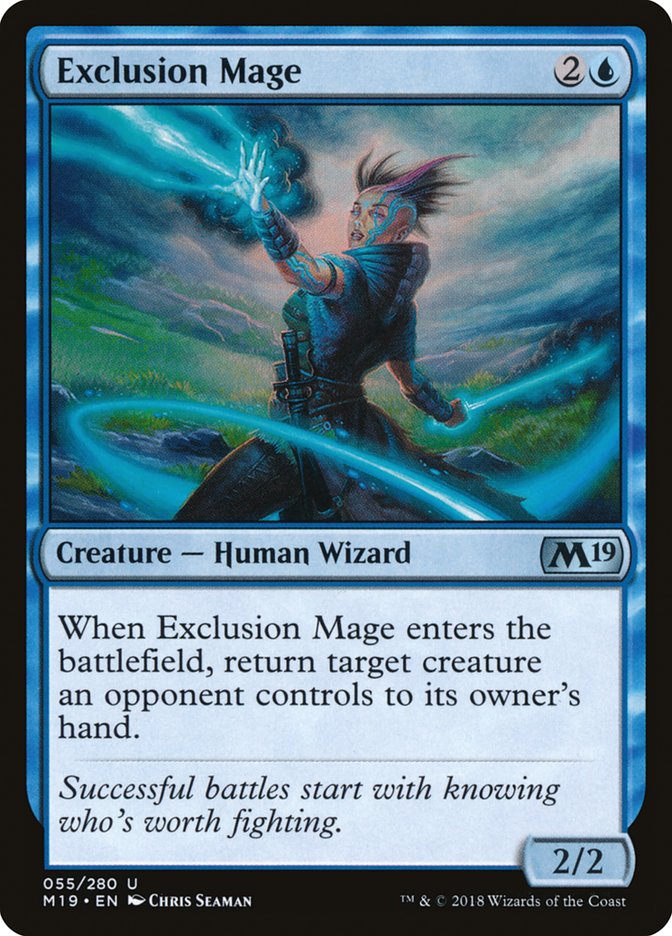It’s almost time for SCG Worcester, which will mark the debut of Core Set 2019 in Standard in the Team Constructed main event. I’m
teaming with Jody Keith and Collins Mullen again after our third-place
finish at SCG Baltimore, but Collins and I are switching seats and I’ll be
playing Standard this time around. Therefore, I’ve been playing Standard
League after Standard League on Magic Online since the release of Core Set 2019 almost a week ago, and I wanted to share everything
I’ve learned about the new decks of the format in that time for you today.
So far, Core Set 2019 is having a huge impact on the format so
let’s dive on in to see what’s going on.
Creatures (16)
- 1 Torrential Gearhulk
- 3 Whirler Virtuoso
- 4 Glint-Sleeve Siphoner
- 3 The Scarab God
- 2 Champion of Wits
- 3 Nicol Bolas, the Ravager
Planeswalkers (1)
Lands (26)
Spells (17)

The new level one deck is Grixis Midrange, not Mono-Red Aggro like the
previous format. There are many different ways to go about building a
Grixis Midrange deck, but they all revolve around Vraska’s Contempt, Nicol
Bolas, the Ravager, and The Scarab God. This version of the deck that
supports a small energy subtheme with Whirler Virtuoso and Glint-Sleeve
Siphoner has been the most popular version on Magic Online so far, and it’s
what I’m expecting to be the most popular at #SCGWOR as well. It’s
the natural progression of B/U Midrange, which
ended last Standard season as one of the most popular decks and won U.S.
Nationals.
Nicol Bolas, the Ravager is the real deal. It’s certainly good enough to
warrant changing the entire B/U Midrange manabase to include it in this
strategy, and I wouldn’t recommend anyone playing less than three copies of
the new mythic. If you haven’t had a chance to play against Nicol Bolas
yet, make sure you hold that extra land in your hand to protect your last
spell from its enters-the-battlefield ability.
The most likely time your opponent will use the activated ability is during
their second main phase, after getting an attack in with Nicol Bolas, so if
you plan on using a removal spell like Vraska’s Contempt on it anyway, I’d
recommend casting it during your own turn. You’re not going to “get” many
players by casting it in response to the activated ability, because they
will simply use their mana on something else in their second main phase if
Nicol Bolas connected during combat anyway.
Vraska’s Contempt is the premier removal spell in Standard, plain and
simple. It may even be the most important card in the entire format. If
you’re playing any black deck, play four Vraska’s Contempt, even if that
black deck is an aggro deck like Mono-Black Zombies. It’s okay to have a
copy, maybe two at most in the sideboard, but don’t register less than four
Vraska’s Contempts within your 75. There are too many threats in the format
that will take over the game if they aren’t exiled, and the two life
Vraska’s Contempt provides has proven to be much more valuable than most
people thought when the card was originally previewed.
Creatures (10)
Planeswalkers (3)
Lands (26)
Spells (21)

For myself, this is my current Grixis Midrange list as of now. I started
with Glint-Sleeve Siphoners like the previous list, but found myself
sideboarding them out so much that I’ve decided to go with the controlling
slant in game one as well. I also felt like the Aether Hubs actually made
the manabase worse, as I wouldn’t have enough energy to make them anything
but colorless lands too often. I’ve had more success with the archetype
since moving away from the energy cards and towards a more powerful
lategame, featuring Liliana, Death’s Majesty.
Liliana, Death’s Majesty may be the card that gained the most with the
printing of Nicol Bolas, the Ravager. It curves perfectly to return a Nicol
Bolas that died back to the battlefield, making your opponent discard
another card. It also allows you to discard Nicol Bolas or The Scarab God
to Champion of Wits, only to return them with Liliana and have two
must-answer threats on the battlefield immediately. Later in the game, if
you’re able to transform Nicol Bolas, you can use it to return Liliana from
the graveyard, which in turn can return another creature from the
graveyard. The combination of these two cards, also with The Scarab God, is
an unbelievably strong late game engine, which is why I prefer this version
over the energy builds of Grixis Midrange. This doesn’t even include the
ridiculous plays you can make with Torrential Gearhulk and Liliana, Death’s
Majesty.
Creatures (20)
- 1 Pia Nalaar
- 2 Kari Zev, Skyship Raider
- 1 Hazoret the Fervent
- 3 Soul-Scar Mage
- 2 The Scarab God
- 3 Earthshaker Khenra
- 4 Goblin Chainwhirler
- 4 Nicol Bolas, the Ravager
Planeswalkers (3)
Lands (26)
Spells (11)

Creatures (22)
- 2 Pia Nalaar
- 4 Scrapheap Scrounger
- 2 Kari Zev, Skyship Raider
- 2 Glorybringer
- 2 Soul-Scar Mage
- 2 The Scarab God
- 4 Goblin Chainwhirler
- 4 Nicol Bolas, the Ravager
Planeswalkers (2)
Lands (26)
Spells (10)
Sideboard

If you want a more aggressive slant to playing Nicol Bolas, let me
introduce you to Grixis Aggro. I first came across this deck when I was
playing against Clyde The Glide Drexler in a league on Magic Online, and
they were kind enough to send me their decklist for me to use for the Team
Standard Super League this past Tuesday, where I was looking for a mostly
red deck with a twist. They later on got the list published by going 5-0 in
a Magic Online League, and here’s their decklist if you’d like to contrast
the two. The goal of this deck is to continually play hard to deal with
threats, keeping your opponent on the back foot, and then finish the game
off with Nicol Bolas or The Scarab God when your opponent has depleted
their resources. That’s not the only game this deck can play, however, as
it can grind almost as well as the normal Grixis Midrange decks. While I
enjoy playing this deck, I don’t believe it’s quite as good as the normal
Grixis Midrange decks due to the constraint on the different colors of
mana, which will cost you games at times, but this is still a new deck with
plenty of potential.
Creatures (22)
- 4 Death Baron
- 4 Diregraf Ghoul
- 2 Scrapheap Scrounger
- 4 Lord of the Accursed
- 4 Dread Wanderer
- 4 Graveyard Marshal
Planeswalkers (3)
Lands (25)
Spells (10)

Another new addition to the metagame since Core Set 2019 is
Mono-Black Zombies, headlined by Liliana, Untouched by Death. While the
best Mono-Black Zombies decklist is still being refined by many, this is
the list my teammate Corbin Hosler played during the Team Standard Super
League this past week. This deck looks to have everything it needs to
compete in Standard these days, especially against control decks, by having
a rare combination of recursive threats, quality removal, and heavy hitters
in the sideboard, like Duress and Arguel’s Blood Fast. This is a real deck
that’s not going anywhere soon and is a wonderful option for week one when
opponents may not be ready for the power and resiliency of Mono-Black
Zombies.
Creatures (18)
- 1 Walking Ballista
- 4 Kitesail Freebooter
- 4 Knight of Grace
- 3 Knight of Malice
- 3 Lyra Dawnbringer
- 3 Resplendent Angel
Planeswalkers (4)
Lands (24)
Spells (14)

This is the deck I’ve had the most experience with playing so far since the
release of Core Set 2019 on Magic Online, and is the only other
deck besides Grixis Midrange that I’m considering playing. Most of the time
I’ve tested this deck I’ve played Glint-Sleeve Siphoner in the two-drop
slot, along with having Aether Hub in the maindeck,
but then I saw Matthew Foulkes
was playing Kitesail Freebooter instead and I haven’t looked back since.
I’ve never been too high on Kitesail Freebooter in Standard because of the
quality of removal and the weakness of the 1/2 body, but Ajani, Adversary
of Tyrants is the exact card that was needed to make me love playing
Kitesail Freebooter.
Both of the first two abilities of Ajani work perfectly with Kitesail
Freebooter. Either you can make it larger into an imposing flying threat
that protects Ajani or you can return it from your graveyard to the
battlefield to take your opponent’s removal spell and protect Ajani that
way. Kitesail Freebooter isn’t the only card that got much better with the
printing of Ajani though:
History of Benalia is an incredibly powerful card. We saw it have its time
in the spotlight early on in Dominaria Standard, but ultimately it
didn’t last due to the weaknesses of the shell around it. Unfortunately,
both Heart of Kiran and Karn, Scion of Urza didn’t create the best shell
for History of Benalia and it needed new support. Ajani, Adversary of
Tyrants is the perfect four-drop to follow up with after playing a History
of Benalia since you’ll have two creatures with vigilance that you’ll be
able to grow to play offense and defense well. Ajani also incentivizes you
to play plenty of two-drops, and both Knight of Glory and Knight of Malice
fit the bill as perfect cards to play before History of Benalia. The
synergy among all of these cards is much greater than what History of
Benalia decks had previously, which has brought this deck into the
forefront of decks I want to play at #SCGWOR.
Ajani isn’t the only new card in this deck; Resplendent Angel has also been
incredibly impressive. When I first read the card during preview season I
was worried a three mana 3/3 wouldn’t be good enough in a format filled
with Abrade and Lightning Strike, but it certainly has been worth the hype.
I’ve found that I’m often times waiting to play Resplendent Angel until
later in the game and not on turn three where it’s the most vulnerable.
Instead, it can follow up an Ajani on turn five with another two-drop like
Kitesail Freebooter, and Ajani can then immediately get it out of Abrade
range while it’s six mana ability can be turned on the very next turn. It’s
also a great follow up to a Lyra Dawnbringer, a card that already demands
an answer from an opponent and if they don’t have the answer for Lyra,
attacking will gain five life and satisfy Resplendent Angel’s clause to
make a 4/4. Overall, I’ve been incredibly pleased with the strength and
synergy in this deck, and it’s the other option I’ve been considering for #SCGWOR this weekend.
Creatures (30)
- 4 Minister of Inquiries
- 1 Trophy Mage
- 3 Walking Ballista
- 1 The Scarab God
- 4 Champion of Wits
- 3 Kitesail Freebooter
- 4 Seekers' Squire
- 3 Ravenous Chupacabra
- 3 Exclusion Mage
- 4 Stitcher's Supplier
Lands (24)
Spells (6)
Sideboard

The last deck I’m going to touch on today is not a deck I’ve played myself
yet, but a very popular one in the Magic Online leagues this week, U/B
God-Pharaoh’s Gift. While it didn’t really see much play in Dominaria Standard, there’s one card in particular that’s put it
back on the map.
This innocuous looking one-drop fills your own graveyard at an incredible
rate, which is exactly what you want when you’re playing Gate to the
Afterlife. Pair this with Minister of Inquiries and Champion of Wits and
getting six creatures into your own graveyard is trivial. From there all
you need to do is find a Gate to the Afterlife and it’s off to the races.
Many people that I see playing this deck have Hostage Taker, but I’ve
honestly been more impressed with Exclusion Mage. Although it’s not as
devastating of a creature to get back later in the game when you have
God-Pharaoh’s Gift on the battlefield, it plays much better defense early
in the game, which I believe is more valuable. It’s also a nice tempo play
when paired with the other small creatures in the deck, as well as Ravenous
Chupacabra to steal games when you don’t have God-Pharaoh’s Gift on the
battlefield.
While there are still many other decks returning from Dominaria
Standard, like R/B Aggro, U/W Control, and G/B Constrictor, these are the
decks that look to be rising to the top of the new metagame with their
additions from Core Set 2019.


